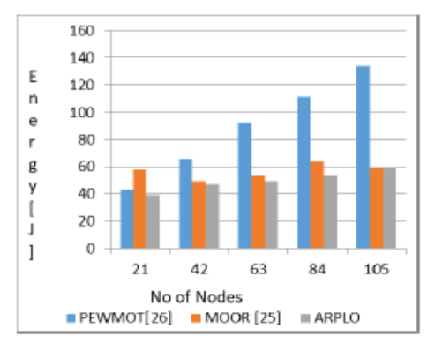


Indian Journal of Science and Technology
Year: 2024, Volume: 17, Issue: 5, Pages: 436-450
Original Article
P K Shashidhar1,2*, T C Thanuja3, Rajashekar Kunabeva4
1Research Scholar, RC, Visvesveraya Technological University, Belagavi, 590018, Karnataka, India
2Assistant professor, Department of ECE, SKSVMACET, Lakshmeshwara, Gadag, Karnataka, India
3Professor, Department of ECE, Visvesveraya Technological University, Muddenahalli, Chikkaballapur, Karnataka, India
4Associate Professor, Department of ISE, SKSVMACET, Lakshmeshwar, Gadag, Karnataka, India
*Corresponding Author
Email: [email protected]
Received Date:17 October 2023, Accepted Date:27 November 2023, Published Date:27 January 2024
Objectives: The main objectives of this research endeavor encompass the development of the Adaptive RPL Optimization (ARPLO) model to enhance data transmission efficiency within IoT networks. This includes constructing a grid-based network structure optimized for data transfer, selecting the most suitable nodes as grid head nodes to maximize network lifespan while minimizing energy consumption, implementing an innovative objective function-driven approach to optimize parent node selection, and integrating an Adaptive Deep Neural Network (ADNN) to accurately classify medical data. Methods: The research methodology entails several key steps. A grid-based network structure is established with IoT nodes and root nodes, where a DODAG process incorporating DIO messages is utilized for node ranking. To enhance energy efficiency, the Trickle algorithm is employed for control message optimization. Grid head nodes are chosen based on metrics such as root node fairness, residual energy, and load influence index. The novel Middle Order Optimal Routing (MOOR) objective function is utilized to optimize routing decisions. ADNN is implemented for precise medical data classification. The proposed model's performance is evaluated through simulation in a Python environment. Findings: The research findings demonstrate that the ARPLO model yields notable benefits compared to existing models. It achieves higher energy efficiency, improved throughput, enhanced packet delivery ratio (PDR), and an extended network lifespan. The Trickle algorithm contributes to efficient control message optimization. The MOOR-based routing approach improves multimedia medical data transfer. Moreover, the integration of ADNN enhances the accuracy of data classification, particularly in healthcare applications. The research outcomes align with the broader field's existing values and reports while offering novel insights that contribute to enhancing the existing knowledge base. ARPLO protocol performance reveals that there is increase of throughput of 31.2%, PDR by 7.12%, lifetime of 10.7 % with reduction of energy consumption by 12.72%, control overhead by 31.01% and end-to-end delay by 33.01%. Novelty: The novelty of this research lies in its comprehensive approach that integrates a grid-based network structure, MOOR-based optimization, and ADNN-based classification. The incorporation of the Trickle algorithm for energy-efficient communication is an innovative feature. The introduction of new metrics for grid head node selection, along with the application of the MOOR objective function for multimedia medical data routing, showcases the research's innovative contributions.
Keywords: Internet of Things (IoT), RPL (Routing Protocol for LowPower and Lossy Networks), Optimization, Routing, Multimedia, Healthcare
© 2024 Shashidhar et al. This is an open-access article distributed under the terms of the Creative Commons Attribution License, which permits unrestricted use, distribution, and reproduction in any medium, provided the original author and source are credited. Published By Indian Society for Education and Environment (iSee)
Subscribe now for latest articles and news.